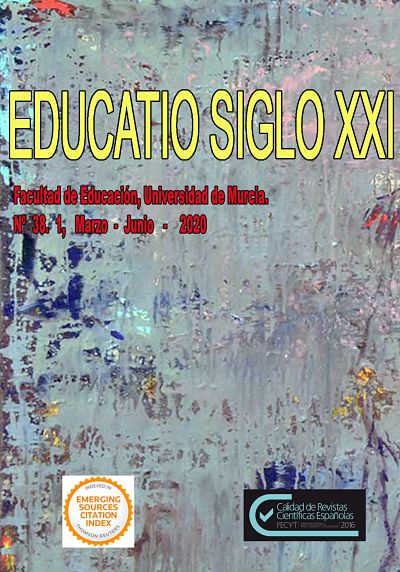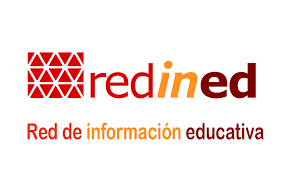Therapeutic intervention and family coordination for promoting the beginning of communication activity in an early attention case
Abstract
This case study reports on an intervention undertaken at a diagnostic and early attention center with a two-year-old pupil with left lateral hemiparesis and difficulties in handling and communication. By applying for four months the Benson Schaeffer's system (Total Communication) with the support of the TEACCH method, we aimed to overcome this pupil’s serious communicative limitations. The methodological procedure used was mixed and the investigation techniques used were the application of a standardized test, interviews, records of observation and documentary analysis. From the test filled in by the mother, which established the initial evaluation of the case, the program was applied, and daily records were kept. At the end of the intervention, the test was completed again and the information was compared. In addition, we interviewed her nanny and we analyzed the documentation provided by the family and the center where she is tended. Results show clear progress on the part of the baby: learning of signs, communication of needs, emission of verbalizations and generalization in different contexts. This promoted in the baby more autonomy and established a solid base from which she will be able to sustain new learnings.
Downloads
-
Abstract2017
-
PDF (Español (España))2615
References
Angrosino, M. (2012). Etnografía y observación participante en investigación cualitativa. Madrid: Ediciones Morata.
Bayley, N. (1977). BSID: Escalas Bayley de Desarrollo Infantil: manual. Madrid: TEA ediciones.
Boquete-Jamardo, A. & Fernández-Méndez, J. (2015). Eficacia de un sistema alternativo de comunicación en PC: estudio caso único. Revista de Estudios e Investigación en Psicología y Educación, 0(9), 79-84. doi:10.17979/reipe.2015.0.09.642
Branson, D. & Demchak, M. (2009). The use of augmentative and alternative communication methods with infants and toddlers with disabilities: A research review. Augmentative and Alternative Communication, 25, 274–286. doi:10.3109/07434610903384529
Enireb, M. & Patiño, V. (2017). Parálisis cerebral infantil: estimulación temprana del lenguaje método de Bobath. Dominio de las Ciencias, 3(4), 627-706.
Federación Estatal de Asociaciones de Profesionales de Atención Temprana (GAT) (2005). Libro blanco de la atención temprana. Madrid: Real Patronato sobre Discapacidad.
Fontes, S., García, C., Quintanilla, L., Rodríguez, R., Rubio, P. & Sarriá, E. (2010). Fundamentos de investigación en psicología. Vizcaya: Grafo S. A.
Frattali, C. M. (1998). Measuring outcomes in speech-language pathology. Sttutgart: Thieme.
García-Martínez, M. P. (2016). Una visión comprensiva de la realidad de los menores que utilizan sistemas aumentativos y/o alternativos de comunicación (SAAC) desde los ámbitos familiar, profesional e iguales. Papel de las NNTT (tesis doctoral). Universidad de Málaga, España.
Goldbart, J. & Marshall, J. (2004). “Pushes and Pulls” on the parents of children who use AAC. Augmentative and Alternative Communication, 20, 194–208. doi:10.1080/07434610400010960
Hercberg, P. (2015). ¿Qué es la parálisis cerebral? En Confederación Aspace, Descubriendo la parálisis cerebral (pp. 7-13). Madrid: Confederación Aspace.
Joginder, S., Hussein, N., Mustaffa, R. & Hassan, F. (2017). Reflections of malaysian parents of children with developmental disabilities on their experiences with AAC. Augmentative and Alternative Communication, 33(2), 110-120. doi:10.1080/07434618.2017.1309457
Johnson, J.M., Inglebret, E., Jones, C. & Ray, J. (2016). Perspectives of speech language pathologists regarding success versus abandonment of AAC. Augmentative and Alternative Communication, 22, 85–99. doi:10.1080/07434610500483588
Light, J. & McNaughton, D. (2012). The changing face of augmentative and alternative communication: Past, present, and future challenges. Augmentative and Alternative Communication, 28, 197–204. doi:10.3109/07434618.2012.737024
Martin, G. & Pear, J. (2008). Modificación de conducta. Qué es y cómo realizarla. Barcelona: Prentice Hall.
Pacheco, E. & Blanco, M. (2002). En busca de la "metodología mixta" entre un estudio de corte cualitativo y el seguimiento de una cohorte en una encuesta retrospectiva. Estudios Demográficos y Urbanos, 17(3), 485-521.
Peirats, J. & Vidal, I. (2016). Introducción del sistema PECS para la superación de las limitaciones comunicativas en un caso de síndrome de West. Aloma: Revista de Psicologia, Ciències de l'Educació i de l'Esport, 34(1), 71-80.
Peñafiel, F. (2017). Planteamiento inclusivo de la participación de la familia en contextos de intervención con alumnos con discapacidad. Revista de educación inclusiva, 5(2), 117-127.
Rivière, A. (2001). Lenguaje y Autismo. En D. Valdez et al. (Eds.), Autismo: enfoques actuales para padres y profesionales de la salud y la educación (pp. 15-42). Buenos Aires: Fundec.
Robles, M. A. & Sánchez, D. (2013). Atención Infantil Temprana en España. Papeles del psicólogo, 34(2), 132-143.
Rodríguez, G., Gil, J. & García, E. (1996). Introducción a la investigación cualitativa. Granada: Ediciones Aljibe.
Romski, M., Sevcik, R. A., Barton-Hulsey, A. & Whitmore, A. S. (2015). Early intervention and AAC: What a difference 30 years makes. Augmentative and Alternative Communication, 31(3), 181-202. doi:10.3109/07434618.2015.1064163
Sabino, C.A. (1989). El proceso de investigación. Santiago: El Cid.
Schaeffer, B., Musil, A. & Kollinzas, G. (1980). Total Communication: A signed speech program for non-verbal children. Champaing, Illinois: Research Press.
Stake, R. E. (1998). Investigación con estudio de casos. Madrid: Ediciones Morata.
Tamarit, J. (1989). Uso y abuso de los sistemas alternativos de comunicación. Comunicación, lenguaje y educación, 1(1), 81-94.
Taylor, S. J. & Bogdan, R. (1987). Introducción a los métodos cualitativos de investigación. Barcelona: Paidós.
Tójar, J.C. (2006). Investigación cualitativa. Comprender y actuar. Madrid: La Muralla.
Valdivia, M. V. (2017). Programa de intervención para alumnado con parálisis cerebral infantil. Revista Educativa de Trabajos Orientados al Siglo XXI, 1(1), 51-76.
Velázquez, R. R., González, A. H., Ramos, R. R., Ramírez, I. M., & Fernández, L. R. (2017). Problemas del lenguaje en niños con parálisis cerebral. Revista de Logopedia, Foniatría y Audiología, 37(2), 63-69.
Walker, V.L. & Snell, M.E. (2013). Effects of augmentative and alternative communication on challenging behaviour: A meta-analysis. Augmentative and Alternative Communication, 29, 117–131. doi: 10.3109/07434618.2013.785020
Wetherby, A. M. & Prizant, B. M. (2003). CSBS manual: communication and symbolic behavior scales. EEUU: Brookes Pub.
Original work publishes in this journal is subject to the following terms:
1. Murcia University Press (the publishing house) holds the copyright of the publishes work, and favours and allows their reutilization under the use license stated in point 2.
© Servicio de Publicaciones, Universidad de Murcia, 2015
2. Work is published in the electronic edition under a license (Creative Commons Reconocimiento-NoComercial-SinObraDerivada 4.0 España (legal text). They can be copied, used, disseminated, transmitted and publicly presented, as long as: i) authorship and original publication source is acknowledged (journal, publishing house and URL of the work); ii) are not used for commercial purposes; iii) the existence and specifications of this use license is stated.
3. Conditions for self-archive. Authors are allowed and encouraged to disseminate electronically the pre-pint (before review) and/or post-print (accepted for publication) versions of their work before their publication since that favours earlier circulation and dissemination resulting in an increased chance for the authors to be cited and for the work to reach a bigger share of the academic community. Colour: RoMEO: green.







